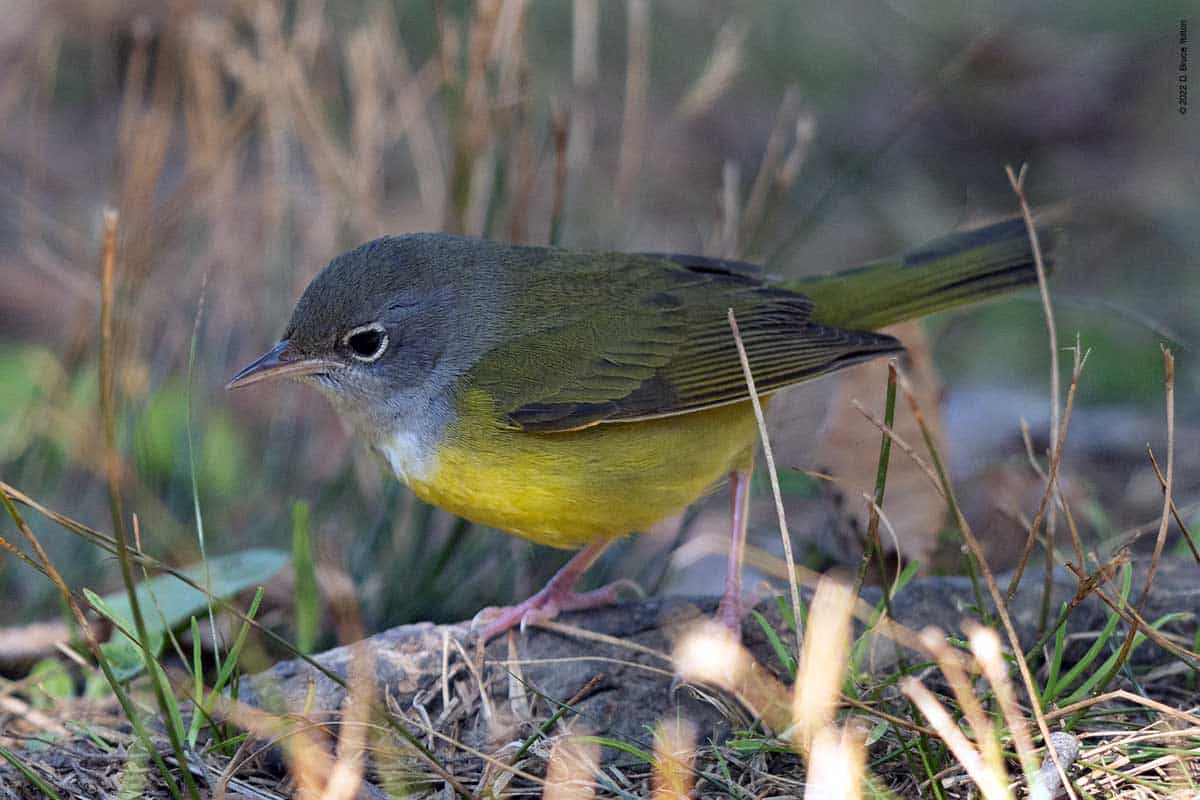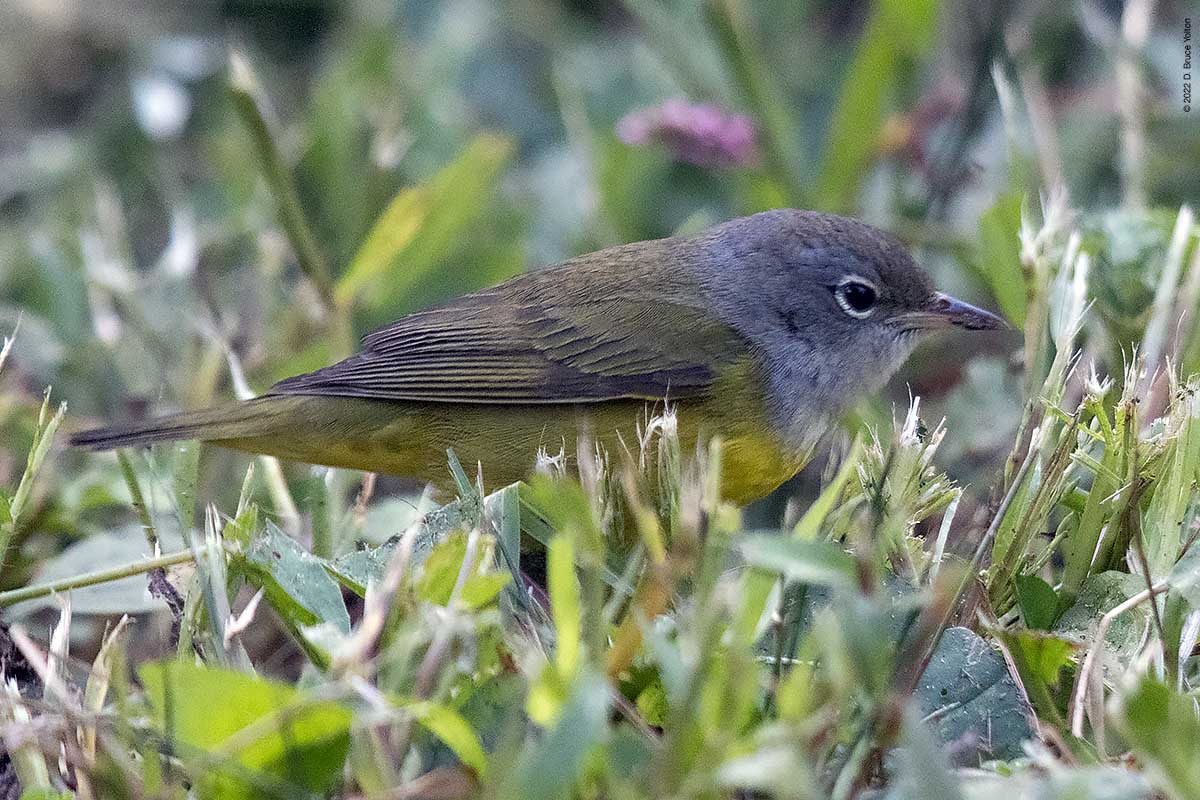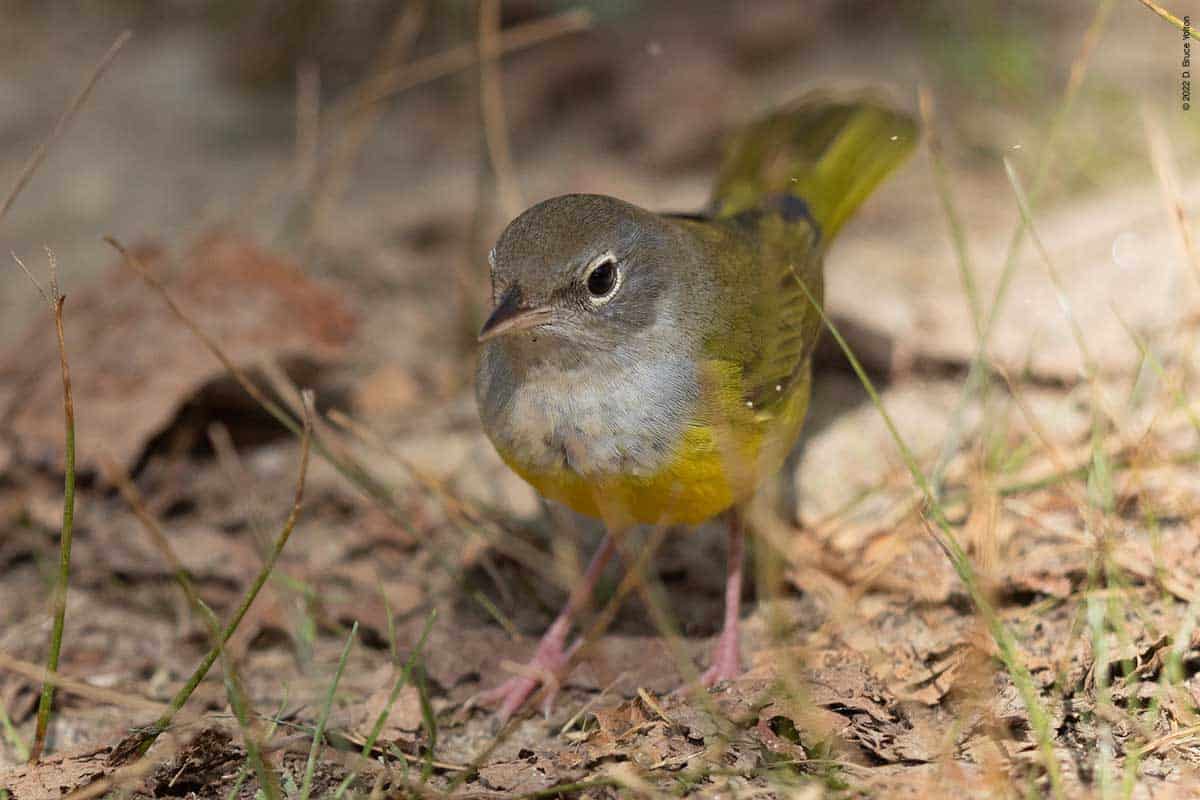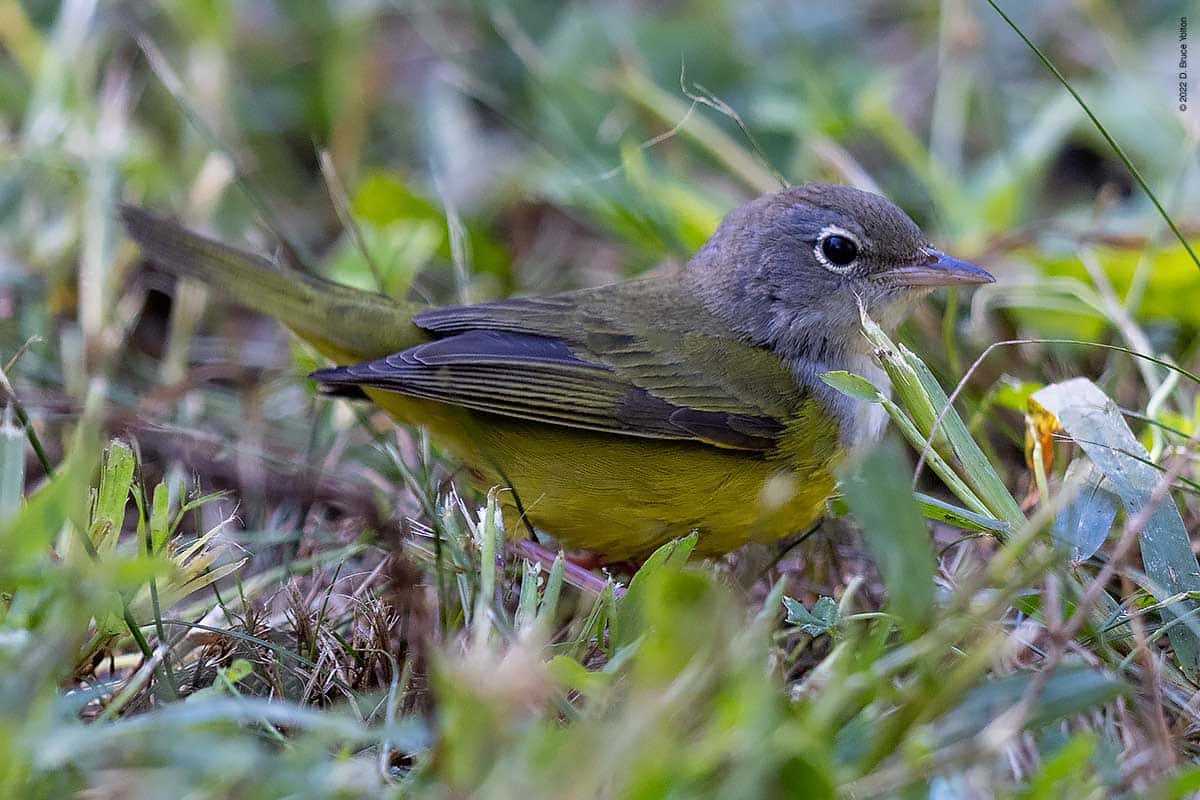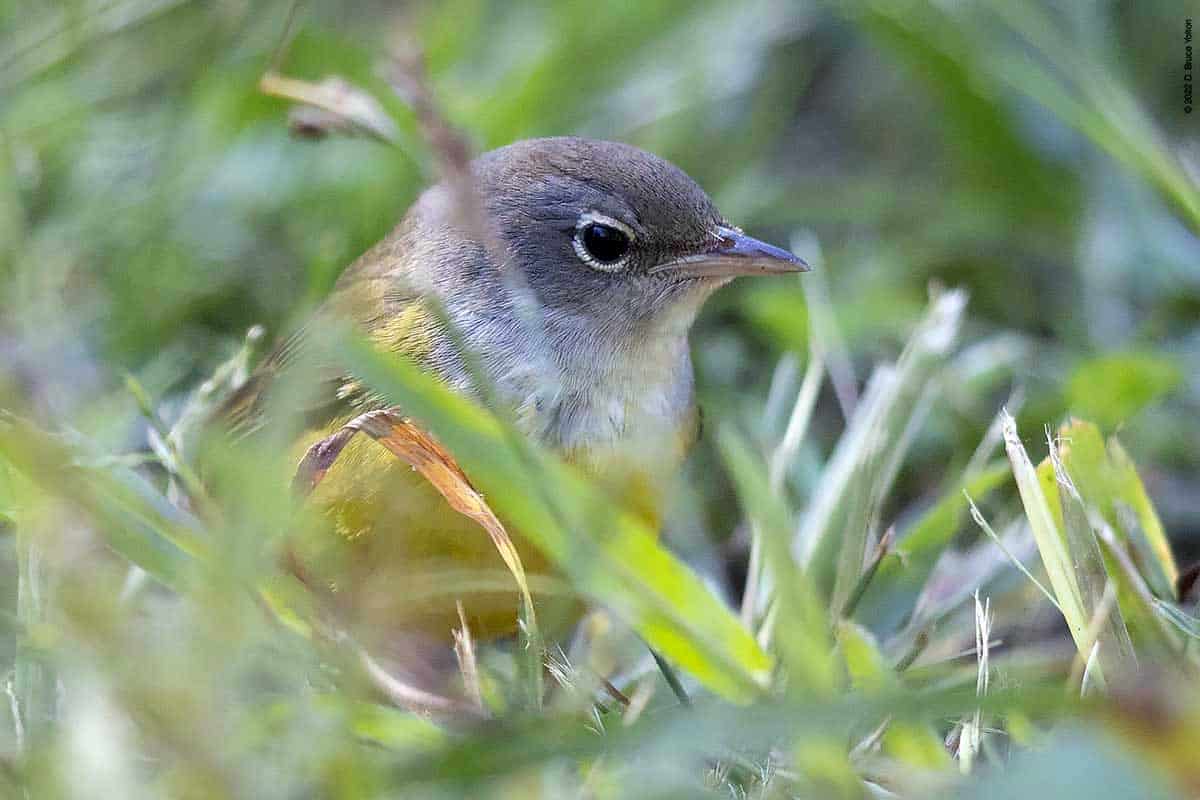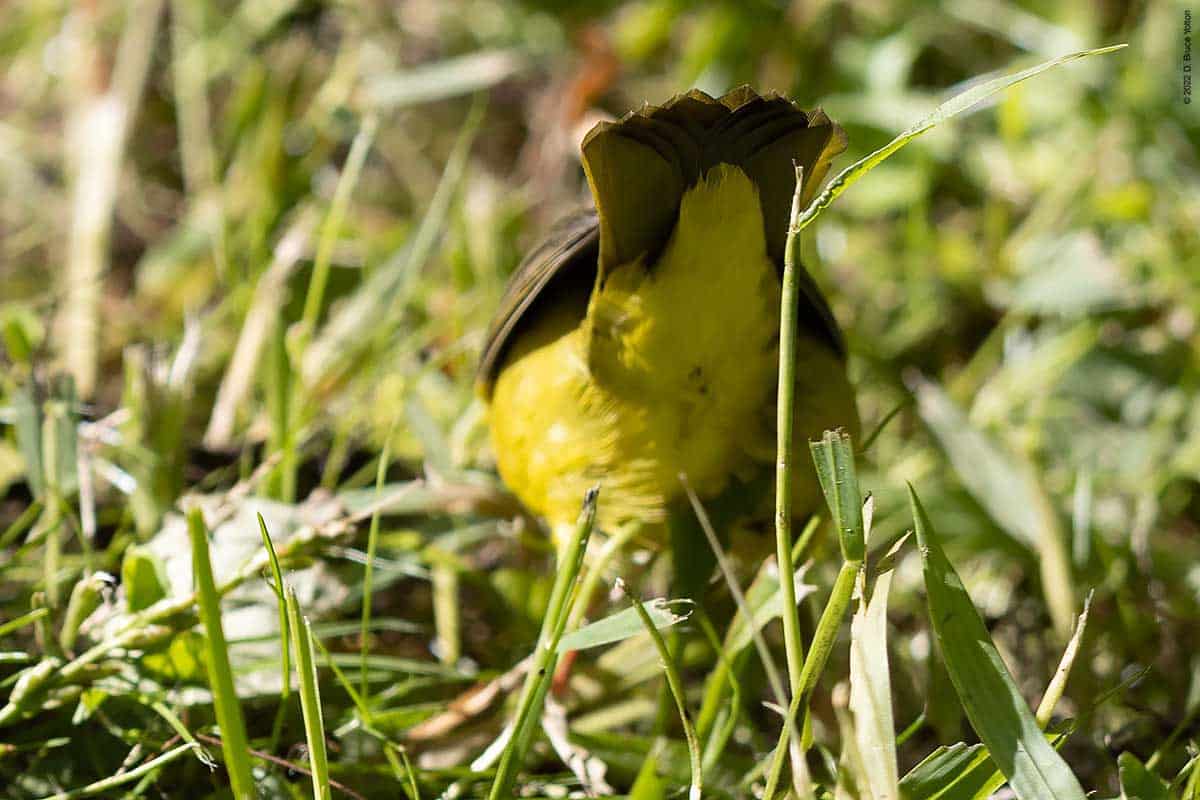On Thursday, Central Park had a wonderfully cooperative Mourning Warbler. Usually, this species is very difficult to observe as it often is likes to hide in low vegetation. However, this bird out in the open and seemed to only be focused on finding worms to refuel before continuing its migration south.
Early low resolution photos send around on social media suggested the bird might be a similar species, a MacGillivray’s Warbler (whose range is in the west and Mexico), which has eye arcs rather than a broken eye ring. Adding to the puzzle was that this was a fall female-type (adult female or immature male), which is paler overall and has white in the throat, and not what many birders are used to seeing in Central Park.
So, birders got out their field guides and Warbler apps, and carefully looked for the differences in field marks between the two species. Beyond differences in eye rings, the yellow in the undertail tappers to a point in the MacGillivray’s Warbler rather than a more rounded blunt end in the Mourning Warbler.
So, upon closer inspection it was clear this was a Mourning Warbler but the exercise of confirming that it was worth the effort.
